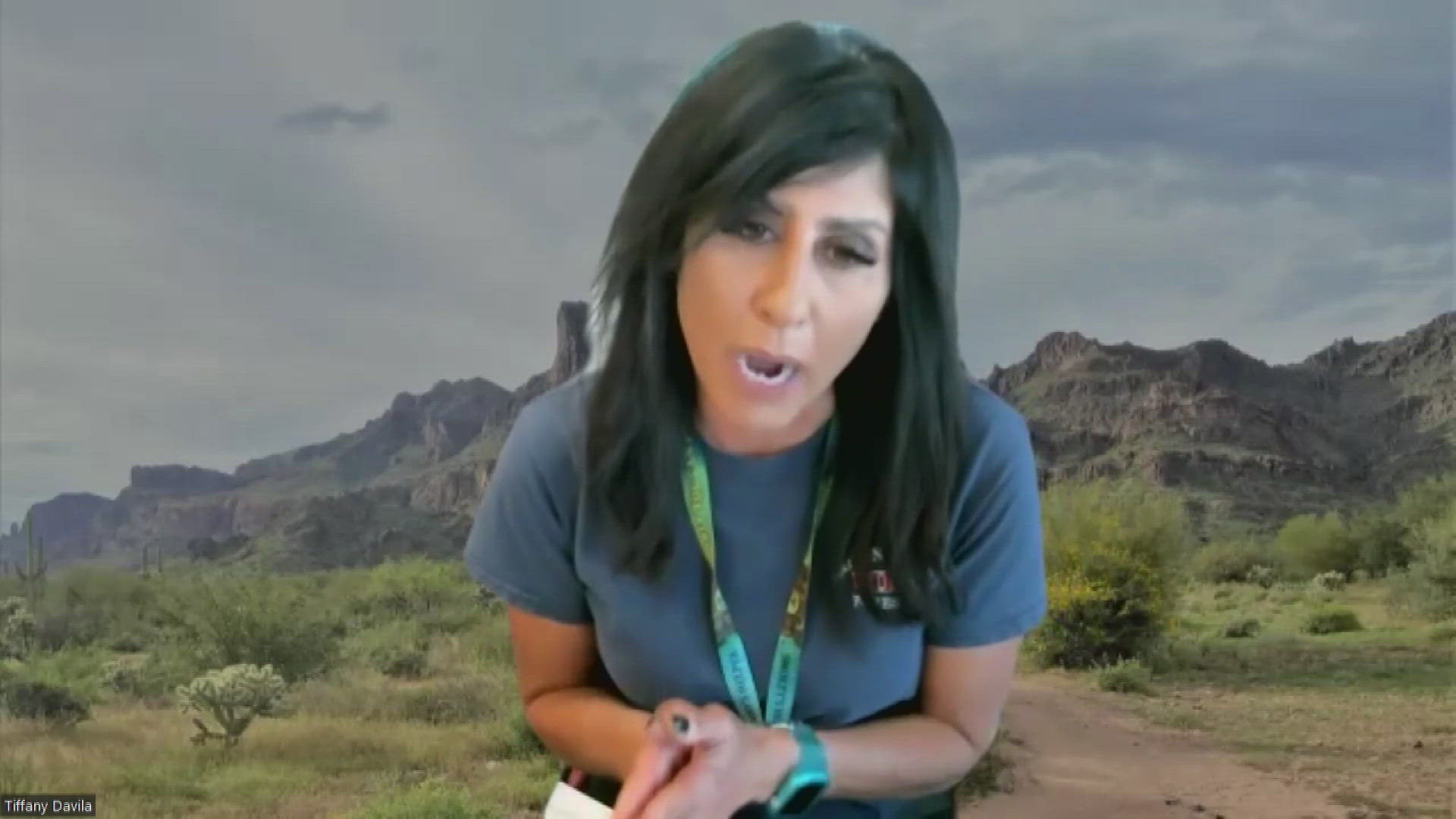PHOENIX — The skies above southern Arizona are streaked with darkened clouds. And where there's smoke, there's fire.
Over the last month, Cochise, Pima and Pinal counties have already had to grapple with 10 or so wildfires. In a broad curve stretching south along the Mogollon Rim, dry lower deserts have set the stage for an active fire season, even as temperate weather gives firefighters a breather.
Tiffany Davila, a spokeswoman from the Arizona Department of Forestry and Fire Management, said fire crews are going to have their work cut out for them. It's just a matter of time... And temperature.
"We're starting to dry out," she explained, "But we really need to see the continual warm temperatures to see those larger scale incidents during our wildfire season."
As of Tuesday, crews are working to contain the Flying Bucket Fire — a bush fire believed to have been caused by human activity. It seems under control, in large part due to the weather.
"Because that fire was able to lay down overnight, [crews] were able to work around it and stop forward progress. But take that fire and put it in June, and we could be talking about a whole different incident. We aren't there right now," Davila said.
Dry vegetation and hot, windy temperatures push Arizona into extreme fire risk. Plants in the lower desert still have some moisture in them. Likewise, the High Country has a while before it's dry enough to be at significant risk. But several areas have put out red flag warnings and Davila said burn bans are in the near future.
As she puts it, "There's always that potential, right?" No one part of Arizona is going to be entirely fireproof, so "people need to be mindful. No matter where they live, it's not a matter of if. It's when."
"Human starts range from 70% to 85% annually as the cause of our fires," Davila said. "Anyone working outside or even recreating, be mindful of your surroundings. Have some water nearby. Have a shovel so in case that fire does get out of hand, you are able to put it out quickly."
Experts are preparing for another hotter-than-normal summer and an above-average wildfire season. Residents in fire-prone areas are encouraged to get their evacuation kits together and familiarize themselves with Arizona's 'READY, SET, GO!' system.
Davila noted that the two most forgotten things in a wildfire evacuation are prescriptions and pets. In an emergency situation, it can be shockingly easy to leave an animal behind.
"Don't leave your pets, because you might not be able to go back and get them for a few days."
>> Download the 12News app for the latest local breaking news straight to your phone.
Wildfire Go-Kit
Residents in wildfire-prone areas are urged to have an emergency supplies kit to bring with them of they are evacuated from their homes, especially as Arizona residents are beginning to see early widespread fire activity throughout the state.
An emergency supply kit should be put together long before a wildfire or another disaster occurs. Make sure to keep it easily accessible so you can take it with you when you have to evacuate.
The National Fire Protection Association (NFPA) recommends that residents near a disaster store emergency supplies in a plastic tub, small suitcase, trash can, backpack, or other containers.
Residents should make sure they have the necessities, such as three gallons of water per person and a three-day supply of ready-to-eat food, the NFPA said. A first-aid kit, prescription medications, contact lenses, and non-prescription drugs should also be taken into account.
Copies of any important family documents, including insurance policies, identification, bank account records, and emergency contact numbers should also be taken and put into a waterproof, portable container in your kit, the NFPA said.
The association lists other items that would help in a disaster, including:
- Sleeping bag or warm blanket for each person
- Battery-powered or hand-cranked radio and a NOAA weather radio to receive up-to-date information
- Dust mask or cotton T-shirt to filter the air
- Matches in a waterproof container
- Complete change of clothing including long pants, long sleeve shirts, and sturdy shoes stored in a waterproof container
- Signal flare
The entire NFPA checklist of supplies can be found here.
UP TO SPEED
Catch up on the latest news and stories on our 12News YouTube playlist here.

